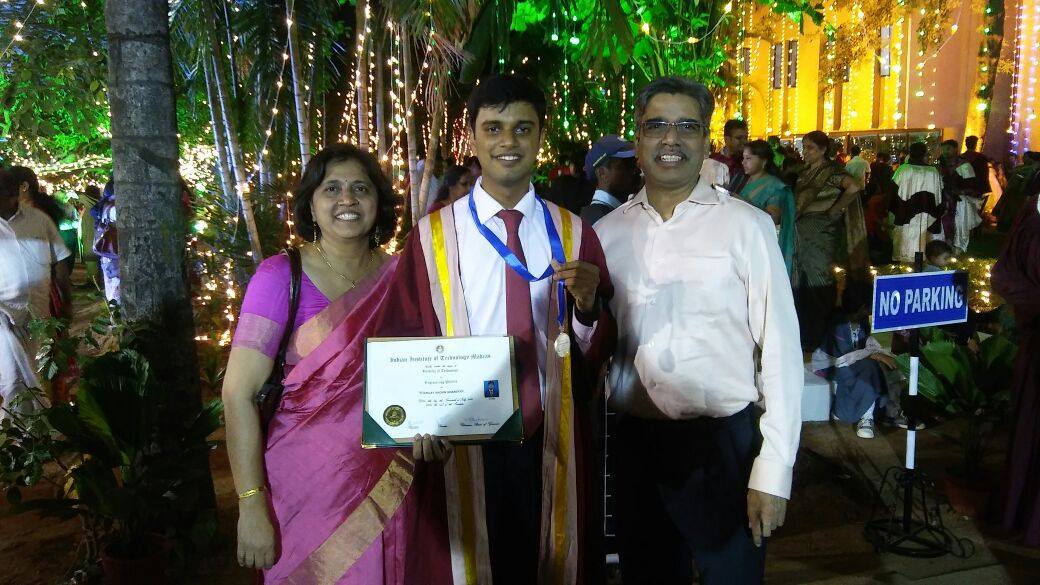Akash Kumar, a 5th year MA student from the Department of Humanities and Social Sciences, gives us a quick glimpse into his Master’s Project on the feasibility of Charter Cities in India.
Is there some action a government of India could take that would lead the Indian economy to grow like Indonesia’s…? If so, what, exactly? If not, what is it about the “nature of India” that makes it so? The consequences for human welfare involved in questions like these are simply staggering: Once one starts to think about them, it is hard to think about anything else
Akash agrees. If one replaces Indonesia with China, this quote by Nobel Laureate Robert Lucas from 1988 is as relevant today. Akash says that he’s been obsessed with the question of economic growth for a very long time. This curiosity initially led him to take courses with his current MAP guides, Prof Vipin Veetil and Prof Ashwin Mahalingam. Under the guidance of Prof Vipin, Akash explored the arena of economic growth in depth. Further, his interest in cities and infrastructure development can be traced back to the courses he took up in the civil engineering department with Prof Ashwin.

Deciding on the specific topic of charter cities within the broad framework of urbanisation and economic growth was a consequence of Akash’s association with the think-tank Centre for Civil Society. He was given the opportunity to host a webinar as a part of Charcha 2020. Akash hosted a fireside chat with Dr. Mark Lutter, founder of Charter Cities Institute, on ‘Fighting Poverty with Charter Cities’. This sparked an interest in the concept, and with Dr. Lutter agreeing to be an external mentor, Akash decided to research the feasibility of charter cities in the Indian context.
What are Charter Cities?
Nobel Laureate Paul Romer was the first to introduce charter cities in popular discourse, in his 2009 Ted Talk. Charter cities refer to cities that have special jurisdiction to create a new governance system, and are based on public-private partnerships. The purpose is to adopt the best practices in commercial regulation.
These are different from private cities like Lavasa, Sri City, or Mahindra World City. The difference lies in the keyword – separate jurisdiction, which means that the city would have a different business legislation from the rest of the country. The national law would still apply for the most part, but in the specific matter of commerce, a charter city would have an independent set of laws.
Charter cities are also different from Special Economic Zones because the latter are industrial clusters and are not meant to be habitable. Cities are much larger in size and make up an entire ecosystem enabling people to settle down and live, unlike SEZs. Commercial legislation within SEZs are not substantially different, but they allow concessions within the existing framework.
Dubai can be considered as a model for a charter city. It’s not exactly one, but it does fit the bill. The city has a separate jurisdiction from the rest of the United Arab Emirates. Shenzhen is another example. When Shenzhen’s development started, China basically experimented with new reforms. And when these reforms succeeded, they were extended to the rest of the nation. Charter cities can, therefore, be very important in answering the question of economic growth.
Does India have any Charter Cities?
India does not have any parallels of a proper charter city, but there are examples that have a close semblance. Jamshedpur is India’s largest city without a municipal corporation because it is run by the Tata group. It is one of the best cities in India to live in in terms of standard of living. It cannot be called a charter city per se because it does not have a separate legislation, but the administrative setup is run entirely by Tata. Auroville is another example. But again, the laws are not different. The city is simply administered independently.
Why does India need Charter Cities?
Over the last three decades, China, led by Shenzhen transformed 19 of its small towns into burgeoning metropolises of more than a million people. On the other hand, India was able to convert only two, Malappuram and Kollam, in Kerala, and that too largely thanks to the redrawing of administrative maps.(The Rise and Fall of Nations (2016), Ruchir Sharma)
India’s urban population is set to double by 2050, according to the World Urbanization Prospects report of 2018. However, India is far from prepared for such a population growth. The country needs new cities, but its performance on this front has been abysmal.
Charter cities provide an ideal sandbox for innovation and hold promise for the country as a whole. In such a model, political opposition to new reforms can also be minimized because they will only be nationalised after obtaining demonstrable evidence to back their success. There are charter city experiments happening in Latin America, Africa and other parts of the developing world that India can draw upon.
Methodology
The methodology being used in this research is interdisciplinary. It involves literature review, public choice analysis and stakeholder mapping. Public choice analysis uses the tools traditionally associated with economics to study political behaviour. It’s most well-known definition was articulated by James Buchanan, who called public choice theory the study of “politics without romance”.
Stakeholder mapping is usually done in both social sciences (in the fields of urban development, economics and so on) as well as civil engineering projects. Mapping all stakeholders involved based on their power and interests also considers the stakeholders that are likely to lose out with a charter city development. Developing mechanisms to compensate for such losses are also looked at. Interviews with leaders of city-building projects, including Mwiya Musokotwane (Nkwashi, Zambia), Iyinoluwa Aboyeji (Talent City, Nigeria) and Sanjay Srivastava (Mahindra World City, India), have contributed to adding practical depth to the research.
Challenges of researching during a Pandemic
The most obvious hurdle was in the form of travel restrictions that prevented field visits. Studying the working of cities like Jamshedpur on ground could have made a difference in the quality of research. Secondly, staying at home (Akash lives in Motihari, Bihar) brings with it its own set of challenges, including internet issues, lack of academic space to intensely focus on research and so on. Balancing co-curriculars, placement preparation, and so on is somewhat harder without the student community that one has on campus.
The first review of the MAP is over, and two more reviews are pending. The current takeaways from this research look very promising, and can be further worked on to create better policies in the country.
Conclusion?
“Poor countries are poor because those who have power make choices that create poverty” (Why Nations Fail (2012), Daron Acemoglu and James A Robinson)
The bottom line is that institutions matter. Good institutions are essential for economic growth. Charter cities could be very effective in driving India’s economic growth and channelising the immense potential of our population. The development of such cities is feasible in India, but more work needs to be done to figure out the legal and political scope of the same.
Edited by: S. Vishal
Design by: Rohit
This series on Spotlight for Undergraduate Research focuses on some interesting and exciting research work by undergraduates in insti. We hope that it promotes better awareness on UG research as well as motivates UG people to perform enriching research at some point in their insti lives.




